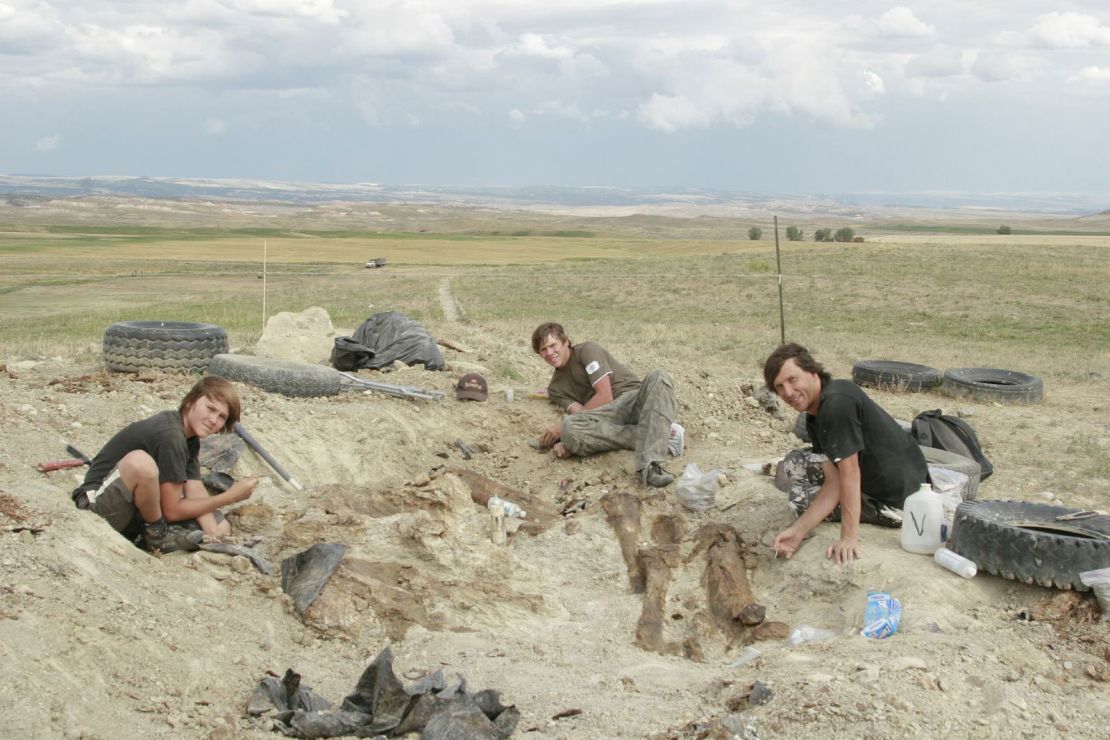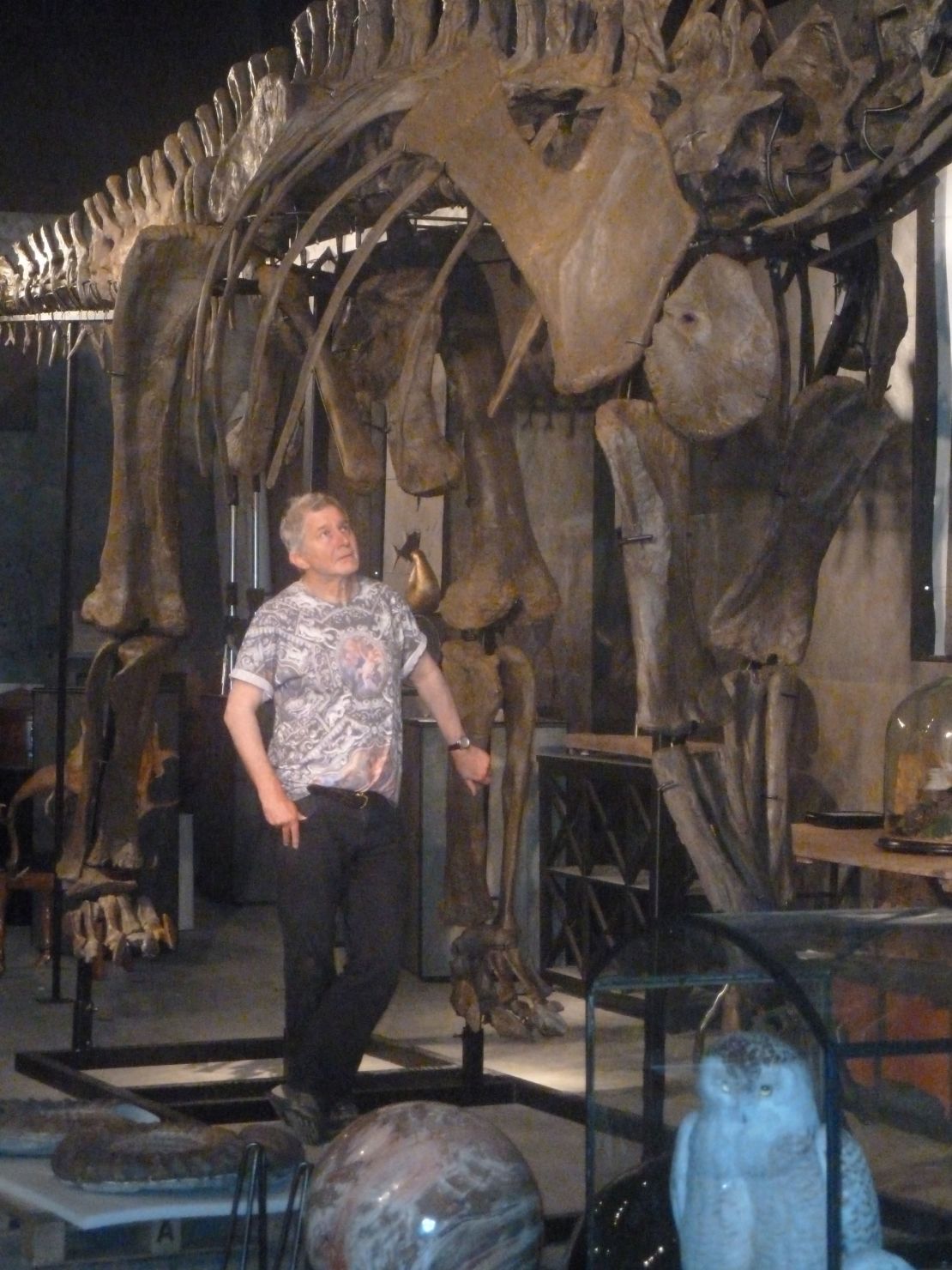Story highlights
Diplodocus longus dinosaurs are believed to have roamed Earth 150 million years ago
Some museums house rare Diplodocus longus skeletons or plaster replicas
The sons of paleontologist Raimond Albersdoerfer found a complete skeleton in Wyoming
The skeleton -- known as "Misty" -- will be auctioned in late November in England
Ever wanted your own dinosaur? A rare Diplodocus longus perhaps? Answers to the name “Misty?”
Well, here’s your chance to add some prehistoric chic to your urban warehouse conversion. Forget feature wall, think feature fossil – and a 17-meter long one, at that. Late Jurassic (150 million years ago, or so), is the new mid-century vintage, you know.
“Misty” is the first complete skeleton of a large dinosaur to come up for sale at auction in Europe, but she hails from the U.S. state of Wyoming.
The dinosaur appears alongside items including Dodo bones, a fossilized Ichthyosaurus (Ichthyosaurus communis) from southern England’s Jurassic coast, and taxidermy and antique and modern artworks on a natural history theme in the “Evolution” sale at Summers Place Auctions in Billingshurst, southern England.
Author and painter Errol Fuller, who is curating the exhibition and sale, says Misty was found in 2009 by the then 11 and 14-year-old sons of paleontologist Raimund Albersdoerfer.

Dinosaur hunter Albersdoerfer had been excavating the fossil hotspot Dana Quarry in Wyoming, and sent his sons, Benjamin and Jacob, to a nearby area to dig around.
“He directed them to this area – just very close to, but not actually in the quarry –where he thought there might be some very worthless fragments and they came back at the end of the day and said they’d found an enormous bone,” Fuller said.
“They quickly realized that there was going to be many other bones… so they stopped work on the proper quarry.”
It took Albersdoerfer’s team nine weeks to dig out the female Diplodocus longus skeleton.
She was named Misty, Fuller said, after the site itself was branded the “mysterious quarry” because it had gone from being an area of which not much had been expected to one of great potential.

While restrictions are placed on fossils found on U.S. government land, Fuller said Misty had been discovered on private property.
“It’s perfectly legal to bring it from America and legal to move it to any country in the world,” he said. “Museum workers will sometimes try to stop these things… but almost every great fossil discovery was made by fossil collectors or dealers.”
Backhoe cuts into dinosaur’s tail, revealing rare fossil find
Fuller estimated that there could be about half a dozen Diplodocus longus skeletons – and several plaster casts of them – in museums across the globe.
Misty, he said “looks just like the one in [London’s] Natural History Museum – except that one is a plaster cast.”
So how would one display a dinosaur skeleton in one’s warehouse, for example?
Fuller said Misty’s bones had been conserved and consolidated and she would be relatively robust as long as the skeleton was “reasonably carefully handled and reasonably carefully housed.”
It would take two or three people about a day to take it down and another to put it up again and Summers Place could arrange supervision of this, Fuller said.
“It’s been specially designed so that it can be dissembled and assembled again,” he said. “There’s no piece so heavy that two people couldn’t lift it.”
That said, Misty in her entirety is “colossal,” Fuller says. Her bones are secured to a metal armature, which can be taken apart and bolted together again.
Designing it, he said, would have been “a conceptual puzzle” because the skeleton couldn’t be arranged without the armature and it was hard to design the armature without knowing the exact size it needed to be.
The result, Fuller said, is “a feat of engineering. It’s maybe 60ft long by 12ft high and a colossal weight. There are quite a lot of safety considerations because you don’t want pieces falling off.”
Summers Place has put an estimate of £400,000 to £600,000 ($640,000 to 960,000) on Misty.
Fuller musingly compared the fossil to a Ferrari that sold for almost £18 million ($27 million) in August.
Read more: Ferrari sells for record $27.5 million
“If I was a rich man, I could actually have a fossil dinosaur… that would impress my friends much more than a Ferrari and it would cost me just a fraction of £18 million,” he said.
“That is really incredibly cheap if you compare it with a collector’s car and you’ve got a much more spectacular, gob-smacking exhibition.”
Talk about overtaking the neighbors.
Evolution will open for viewing on November 23, ahead of the November 27 auction.




